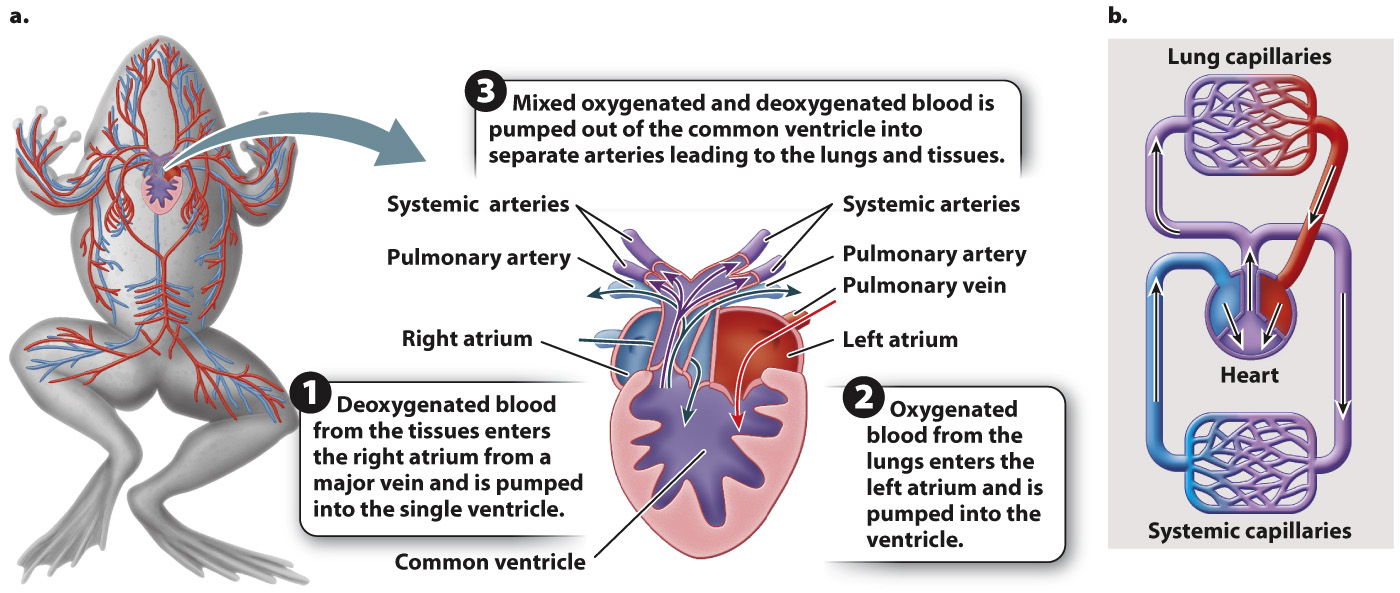Amphibians and reptiles have three-chambered hearts and partially divided circulations.
As animals moved onto land, the transition from breathing water to breathing air had important consequences for the organization of vertebrate circulatory systems. Land vertebrates evolved hearts that separated the circulation of deoxygenated blood pumped to their gas exchange organs from circulation of oxygenated blood delivered to their body tissues. Gas exchange became more efficient and O2 delivery increased. Metabolic rates rose, and animals became capable of greater activity.
Reflecting their aquatic and terrestrial lifestyle, amphibians evolved a variety of ways to breathe. Some retain gills, while others use lungs or their skin, or some combination of these, to breathe. Amphibian hearts evolved an additional atrium, becoming divided into two separate atria and a single ventricle (Fig. 39.21). This arrangement partially separates the pulmonary and systemic circulations, so freshly oxygenated blood can be pumped under higher pressure to the body than is the case in fishes. However, because amphibians have a single ventricle, oxygenated blood returning to the heart from the gills or lungs mixes with deoxygenated blood returning from the animal’s body before being pumped from the ventricle. Anatomical features of the ventricle help to limit this mixing, but nonetheless mixing still hinders the supply of oxygenated blood to an amphibian’s body.

Most reptiles also have a three-